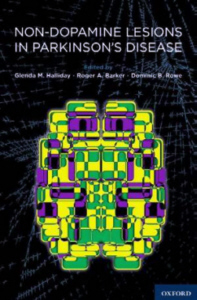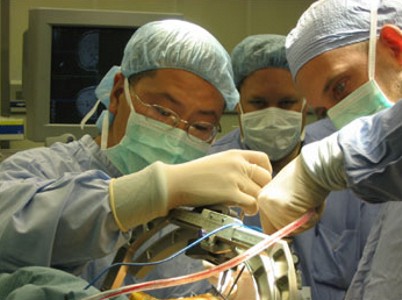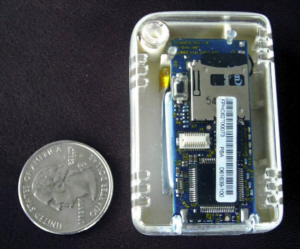|
NOVEMBER
2010
�������������������������������������������� ��������������������������������������������������������������������������������������������������������
30th November 2010 - New book
YOU NEVER MISS THE DOPAMINE (UNTIL THE
BRAIN RUNS DRY) (VOLUME 2)
Bill Schmalfeldt
 Publisher's
description : Bill Schmalfeldt continues his series of sarcastic and hilarious
essays in the "You Never Miss the Dopamine" series. This time, along with his
weird dreams, liberal political opinions, descriptions of his declining health
and rants about literary agents, Bill deals with a real family emergency. He
includes an open letter to Michael J. Fox, wondering why there is no nationwide
push for Parkinson's disease awareness and writes about his impending PD
dementia with a sense of humor that may, in fact, be part of the madness. Both
hilarious and poignant, this book is a must have for anyone with PD, anyone who
knows or loves someone with PD, and anyone who might get the diagnosis someday.
In other words -- you!�
Click here for more details.
For
more books concerning Parkinson's Disease go to
Parkinson's Disease Books. Publisher's
description : Bill Schmalfeldt continues his series of sarcastic and hilarious
essays in the "You Never Miss the Dopamine" series. This time, along with his
weird dreams, liberal political opinions, descriptions of his declining health
and rants about literary agents, Bill deals with a real family emergency. He
includes an open letter to Michael J. Fox, wondering why there is no nationwide
push for Parkinson's disease awareness and writes about his impending PD
dementia with a sense of humor that may, in fact, be part of the madness. Both
hilarious and poignant, this book is a must have for anyone with PD, anyone who
knows or loves someone with PD, and anyone who might get the diagnosis someday.
In other words -- you!�
Click here for more details.
For
more books concerning Parkinson's Disease go to
Parkinson's Disease Books.
�
28th November 2010 - History
THE HISTORY OF L-DOPA
Journal of Neurology [2010] 257
(Supplement 2) : S249-252 (O.Hornykiewicz)
Complete text
L-dopa
has been used for thousands of years for Parkinson's Disease. An ancient
civilisation in India used a tropical legume called Mucuna Pruriens, whose
seeds are a natural source of therapeutic quantities of L-dopa. L-dopa was first
isolated in 1910-1913 from seedlings of
Vicia faba. In 1938, L-dopa decarboxylase was discovered, the enzyme that turns
L-dopa into dopamine. In 1957, dopamine was shown to occur in the brain, and in
1959 it was found to be enriched in a specific part of the brain. In 1960,
postmortem studies showed that a severe dopamine deficiency occurred in
Parkinson's Disease, thereby providing a basis for dopamine replacement therapy
using L-dopa. Accordingly, in 1961, the first successful clinical trial with
L-dopa was carried out. In 1963 dopamine deficiency in the substantia nigra
in people with Parkinson's Disease was found. In 1967 the chronic, high dose
L-dopa regimen was introduced in the
treatment of Parkinson's Disease.�
There are now more than a dozen
formats of L-dopa. Sinemet
consists of L-dopa and Carbidopa (which helps to prevent the metabolism of
L-dopa before it reaches the brain). There is a
controlled release version,
Sinemet
CR, that spreads out the effect of
the L-dopa.
Madopar
consists of L-dopa and Benserazide (which helps to prevent the metabolism
of L-dopa before it reaches the brain). There is also a controlled release version
called
Madopar
CR.
Parcopa is
an orally disintegrating tablet version of Sinemet.
Duodopa is a combination of L-dopa
and Carbidopa in the form of a gel. It is administered throughout the day using
a portable pump directly into the small intestine through a surgically placed
tube.
AcuForm is being added to a combination of
L-dopa and carbidopa. AcuForm helps to deliver a drug like Sinemet over a longer
period of time.
Dual layer L-dopa
combines the immediate release and the controlled release versions of L-dopa.
Stalevo
consists
of L-dopa, Carbidopa and
Entacopone, which inhibits the COMT enzyme, thereby prolonging the effects
of L-dopa.�
Melevodopa is the methyl ester of L-dopa.
Mucuna
pruriens and
Fava
beans are natural sources of L-dopa. In order to refer to this
article on its own
click here.
�
14th November 2010 - New book
NON-DOPAMINE LESIONS IN
PARKINSON'S DISEASE
Glenda Halliday (Editor), Roger
Barker (Editor), Dominic Rowe (Editor)
 Publisher's
description : This book aims to provide a comprehensive review of the
non-dopamine lesions in Parkinson's disease by assessing current knowledge of
their presence and pathophysiology, how they relate to different symptoms, and discuss how they may be potentially
treated. The book addresses most of the known symptoms in patients with
Parkinson's disease. In addition to the classic motor triad, motor speech, eye
movements, olfactory dysfunction, autonomic dysfunction, pain and sensory
abnormalities, sleep disturbances, depression and apathy, dopamine dysregulation
syndromes, hallucinations, psychoses, cognitive impairment, and dementia are reviewed.
Click here for more details.
�For
more books concerning Parkinson's Disease go to
Parkinson's Disease Books.
In order to refer to this
article on its own
click here. Publisher's
description : This book aims to provide a comprehensive review of the
non-dopamine lesions in Parkinson's disease by assessing current knowledge of
their presence and pathophysiology, how they relate to different symptoms, and discuss how they may be potentially
treated. The book addresses most of the known symptoms in patients with
Parkinson's disease. In addition to the classic motor triad, motor speech, eye
movements, olfactory dysfunction, autonomic dysfunction, pain and sensory
abnormalities, sleep disturbances, depression and apathy, dopamine dysregulation
syndromes, hallucinations, psychoses, cognitive impairment, and dementia are reviewed.
Click here for more details.
�For
more books concerning Parkinson's Disease go to
Parkinson's Disease Books.
In order to refer to this
article on its own
click here.
�
12th November 2010 - New research
DBS REDUCES PARKINSON'S
DISEASE DRUG USE
Ideggy�gy�szati szemle [2010] 63
(9-10) : 314-319 (Feh�r G, Bal�s I, Komoly S, D�czi T, Janszky J, Aschermann Z,
Bal�zs E, Nagy F, Kov�cs N.P�csi)
Complete abstract
Deep Brain Stimulation (DBS) has
been shown to greatly reduce the need for Parkinson's Disease drugs.
DBS
involves the use of electrodes that are surgically
implanted into the brain and connected to a small electrical device called a
pulse generator that can be externally programmed. DBS is intended to enable the
reduction and need for L-dopa and related drugs. For more information go to
Deep
brain stimulation. All patients
 assessed
in this study reduced their Parkinson's Disease drug intake after Deep Brain
Stimulation (DBS). Before the operation, the patients used an average of 12
tablets per day of three different Parkinson's Disease drugs. After the
operation the patients averaged 7 tablets per day of 1-2 Parkinson's Disease
drugs. The use of amantadine, MAO-B and COMT inhibitors were also significantly
decreased. The dose of dopaminergic drugs was lowered from 1136 mg to 706 mg L-dopa or the equivalent. Their Parkinson's Disease symptom scores improved
by nearly 50%. In order to refer to this
article on its own
click here. assessed
in this study reduced their Parkinson's Disease drug intake after Deep Brain
Stimulation (DBS). Before the operation, the patients used an average of 12
tablets per day of three different Parkinson's Disease drugs. After the
operation the patients averaged 7 tablets per day of 1-2 Parkinson's Disease
drugs. The use of amantadine, MAO-B and COMT inhibitors were also significantly
decreased. The dose of dopaminergic drugs was lowered from 1136 mg to 706 mg L-dopa or the equivalent. Their Parkinson's Disease symptom scores improved
by nearly 50%. In order to refer to this
article on its own
click here.
�
9th November 2010 - New research
WEARABLE SENSORS FOR ASSESSING PARKINSON'S
DISEASE
IEEE transactions on bio-medical
engineering [2010] Oct 28 [Epub ahead of print] (S.Patel, T.Buckley, R.Rednic,
D.McClure, L.Shih, D.Tarsy, M.Welsh, P.Bonato)
Complete study
Mercury is a wearable wireless sensor being
developed as a means of enabling home monitoring of the motion of people with
Parkinson's Disease. Patients wear wireless nodes equipped with sensors for
monitoring their movement and physiological conditions. Mercury
consequently has the capability of analyzing sensor data in order to reliably
estimate clinical scores capturing the severity of the patient's
tremor,
bradykinesia, and dyskinesia. The basic
 approach is to capture data from each
limb segment using wearable sensors. The patient
wears up to eight sensors each day and recharges the sensors at night. A laptop
in the patient's home serves as a base station to collect and store sensor data.
The data is then delivered via the Internet to the clinic where it is visualized
and further processed by physicians. The signals are subject to extensive
processing in order to tie the sensor data to clinical measures that evaluate
the patient�s progression of the disease. In order to refer to this
article on its own
click here. approach is to capture data from each
limb segment using wearable sensors. The patient
wears up to eight sensors each day and recharges the sensors at night. A laptop
in the patient's home serves as a base station to collect and store sensor data.
The data is then delivered via the Internet to the clinic where it is visualized
and further processed by physicians. The signals are subject to extensive
processing in order to tie the sensor data to clinical measures that evaluate
the patient�s progression of the disease. In order to refer to this
article on its own
click here.
�
8th November 2010 - New book
TAKE CHARGE OF PARKINSON'S
DISEASE
Anne Cutter Mikkelsen (Author),
Carolyn Stinson (Contributor)
 Publisher's
description : Take Charge of Parkinson�s Disease is for the half million North
Americans with Parkinson�s disease who are focused on living a healthy lifestyle
that emphasizes nutrition and exercise as a way of maintaining optimal health.
Anne Mikkelsen, a professional chef, includes recipes that combine the widest
variety of anti-oxidant, nutrient-rich ingredients, as well as liberal doses of
herbs and spices known to favorably impact the brain and potentially reduce the
effects of the disease. Healthy lifestyle recommendations are interspersed with
Mikkelsen's memoir of her journey with her husband as they discover how to live
well with Parkinson�s disease.
Click here for more details.
�For
more books concerning Parkinson's Disease go to
Parkinson's Disease Books. Publisher's
description : Take Charge of Parkinson�s Disease is for the half million North
Americans with Parkinson�s disease who are focused on living a healthy lifestyle
that emphasizes nutrition and exercise as a way of maintaining optimal health.
Anne Mikkelsen, a professional chef, includes recipes that combine the widest
variety of anti-oxidant, nutrient-rich ingredients, as well as liberal doses of
herbs and spices known to favorably impact the brain and potentially reduce the
effects of the disease. Healthy lifestyle recommendations are interspersed with
Mikkelsen's memoir of her journey with her husband as they discover how to live
well with Parkinson�s disease.
Click here for more details.
�For
more books concerning Parkinson's Disease go to
Parkinson's Disease Books.
�
5th November 2010 - News release
SAFINAMIDE CLINICAL TRIALS FOR PARKINSON'S
DISEASE
Merck Serono have extended their previous six month
clinical trial of Safinamide for Parkinson's Disease to 24 months. Safinamide is
believed to have both dopaminergic and non-dopaminergic actions, including the
inhibition of monoamine oxidase B (MAO-B), activity-dependent sodium channel
antagonism and inhibition of glutamate release. It is intended to be added on to
the existing use of L-dopa or dopamine agonists. In their previous six month study of Safinamide, dosages of 50mg to 100mg
improved Parkinson's Disease symptoms, and reduced "off" time when added on to the use of existing
Parkinson's Disease treatments. However, the reduction in "off" time in
comparison to the use of a placebo was minimal, and the side effects of the clinical
studies were not disclosed. Higher dosages did not
have any beneficial effect. For more
information go
to the
News release.
 After
24 months of testing Safinamide, the improvement in dyskinesia was not
statistically significant. The increase in "on" time beyond that of a placebo
was only 40 minutes for 50mg safinamide, and 50 minutes for 100mg safinamide.
They claimed that the �long-term treatment results are encouraging because they
confirm the safety profile of safinamide." but did not disclose
any of the side effects of Safinamide.
For more
information go
to the
News release. In order to refer to this
article on its own
click here. After
24 months of testing Safinamide, the improvement in dyskinesia was not
statistically significant. The increase in "on" time beyond that of a placebo
was only 40 minutes for 50mg safinamide, and 50 minutes for 100mg safinamide.
They claimed that the �long-term treatment results are encouraging because they
confirm the safety profile of safinamide." but did not disclose
any of the side effects of Safinamide.
For more
information go
to the
News release. In order to refer to this
article on its own
click here.
��������������
��
|
.gif)
.gif)
 Publisher's
description : Bill Schmalfeldt continues his series of sarcastic and hilarious
essays in the "You Never Miss the Dopamine" series. This time, along with his
weird dreams, liberal political opinions, descriptions of his declining health
and rants about literary agents, Bill deals with a real family emergency. He
includes an open letter to Michael J. Fox, wondering why there is no nationwide
push for Parkinson's disease awareness and writes about his impending PD
dementia with a sense of humor that may, in fact, be part of the madness. Both
hilarious and poignant, this book is a must have for anyone with PD, anyone who
knows or loves someone with PD, and anyone who might get the diagnosis someday.
In other words -- you!�
Publisher's
description : Bill Schmalfeldt continues his series of sarcastic and hilarious
essays in the "You Never Miss the Dopamine" series. This time, along with his
weird dreams, liberal political opinions, descriptions of his declining health
and rants about literary agents, Bill deals with a real family emergency. He
includes an open letter to Michael J. Fox, wondering why there is no nationwide
push for Parkinson's disease awareness and writes about his impending PD
dementia with a sense of humor that may, in fact, be part of the madness. Both
hilarious and poignant, this book is a must have for anyone with PD, anyone who
knows or loves someone with PD, and anyone who might get the diagnosis someday.
In other words -- you!�
 Publisher's
description : This book aims to provide a comprehensive review of the
non-dopamine lesions in Parkinson's disease by assessing current knowledge of
their presence and pathophysiology, how they relate to different symptoms, and discuss how they may be potentially
treated. The book addresses most of the known symptoms in patients with
Parkinson's disease. In addition to the classic motor triad, motor speech, eye
movements, olfactory dysfunction, autonomic dysfunction, pain and sensory
abnormalities, sleep disturbances, depression and apathy, dopamine dysregulation
syndromes, hallucinations, psychoses, cognitive impairment, and dementia are reviewed.
Publisher's
description : This book aims to provide a comprehensive review of the
non-dopamine lesions in Parkinson's disease by assessing current knowledge of
their presence and pathophysiology, how they relate to different symptoms, and discuss how they may be potentially
treated. The book addresses most of the known symptoms in patients with
Parkinson's disease. In addition to the classic motor triad, motor speech, eye
movements, olfactory dysfunction, autonomic dysfunction, pain and sensory
abnormalities, sleep disturbances, depression and apathy, dopamine dysregulation
syndromes, hallucinations, psychoses, cognitive impairment, and dementia are reviewed.
 assessed
in this study reduced their Parkinson's Disease drug intake after Deep Brain
Stimulation (DBS). Before the operation, the patients used an average of 12
tablets per day of three different Parkinson's Disease drugs. After the
operation the patients averaged 7 tablets per day of 1-2 Parkinson's Disease
drugs. The use of amantadine, MAO-B and COMT inhibitors were also significantly
decreased. The dose of dopaminergic drugs was lowered from 1136 mg to 706 mg L-dopa or the equivalent. Their Parkinson's Disease symptom scores improved
by nearly 50%. In order to refer to this
article on its own
assessed
in this study reduced their Parkinson's Disease drug intake after Deep Brain
Stimulation (DBS). Before the operation, the patients used an average of 12
tablets per day of three different Parkinson's Disease drugs. After the
operation the patients averaged 7 tablets per day of 1-2 Parkinson's Disease
drugs. The use of amantadine, MAO-B and COMT inhibitors were also significantly
decreased. The dose of dopaminergic drugs was lowered from 1136 mg to 706 mg L-dopa or the equivalent. Their Parkinson's Disease symptom scores improved
by nearly 50%. In order to refer to this
article on its own
 approach is to capture data from each
limb segment using wearable sensors. The patient
wears up to eight sensors each day and recharges the sensors at night. A laptop
in the patient's home serves as a base station to collect and store sensor data.
The data is then delivered via the Internet to the clinic where it is visualized
and further processed by physicians. The signals are subject to extensive
processing in order to tie the sensor data to clinical measures that evaluate
the patient�s progression of the disease. In order to refer to this
article on its own
approach is to capture data from each
limb segment using wearable sensors. The patient
wears up to eight sensors each day and recharges the sensors at night. A laptop
in the patient's home serves as a base station to collect and store sensor data.
The data is then delivered via the Internet to the clinic where it is visualized
and further processed by physicians. The signals are subject to extensive
processing in order to tie the sensor data to clinical measures that evaluate
the patient�s progression of the disease. In order to refer to this
article on its own
 Publisher's
description : Take Charge of Parkinson�s Disease is for the half million North
Americans with Parkinson�s disease who are focused on living a healthy lifestyle
that emphasizes nutrition and exercise as a way of maintaining optimal health.
Anne Mikkelsen, a professional chef, includes recipes that combine the widest
variety of anti-oxidant, nutrient-rich ingredients, as well as liberal doses of
herbs and spices known to favorably impact the brain and potentially reduce the
effects of the disease. Healthy lifestyle recommendations are interspersed with
Mikkelsen's memoir of her journey with her husband as they discover how to live
well with Parkinson�s disease.
Publisher's
description : Take Charge of Parkinson�s Disease is for the half million North
Americans with Parkinson�s disease who are focused on living a healthy lifestyle
that emphasizes nutrition and exercise as a way of maintaining optimal health.
Anne Mikkelsen, a professional chef, includes recipes that combine the widest
variety of anti-oxidant, nutrient-rich ingredients, as well as liberal doses of
herbs and spices known to favorably impact the brain and potentially reduce the
effects of the disease. Healthy lifestyle recommendations are interspersed with
Mikkelsen's memoir of her journey with her husband as they discover how to live
well with Parkinson�s disease.
 After
24 months of testing Safinamide, the improvement in dyskinesia was not
statistically significant. The increase in "on" time beyond that of a placebo
was only 40 minutes for 50mg safinamide, and 50 minutes for 100mg safinamide.
They claimed that the �long-term treatment results are encouraging because they
confirm the safety profile of safinamide." but did not disclose
any of the side effects of Safinamide.
For more
information go
to the
After
24 months of testing Safinamide, the improvement in dyskinesia was not
statistically significant. The increase in "on" time beyond that of a placebo
was only 40 minutes for 50mg safinamide, and 50 minutes for 100mg safinamide.
They claimed that the �long-term treatment results are encouraging because they
confirm the safety profile of safinamide." but did not disclose
any of the side effects of Safinamide.
For more
information go
to the